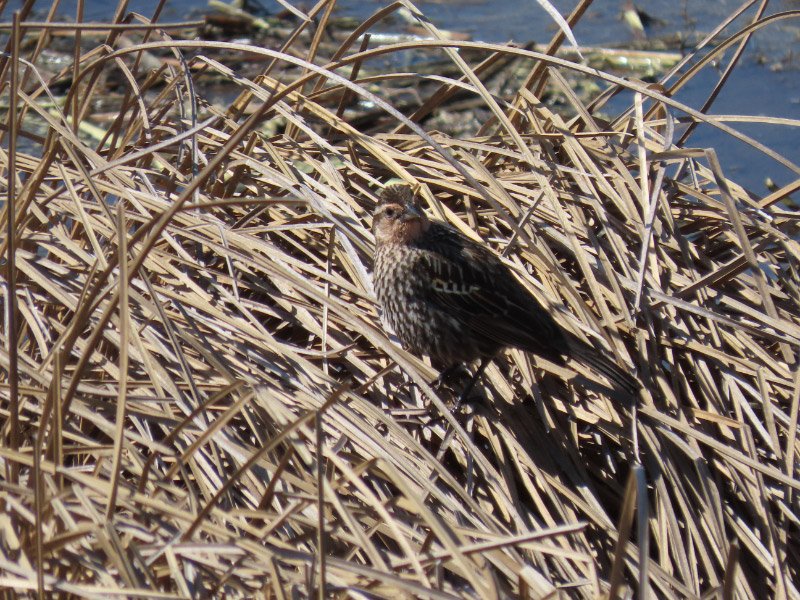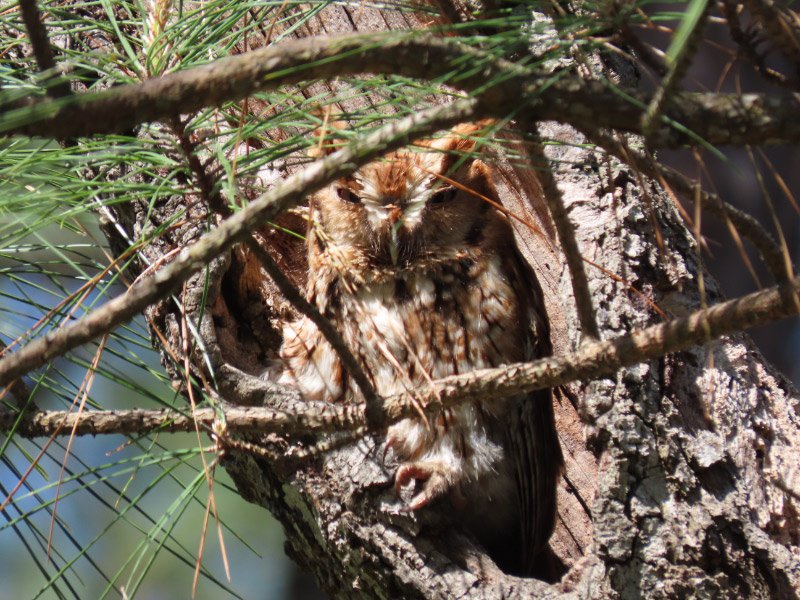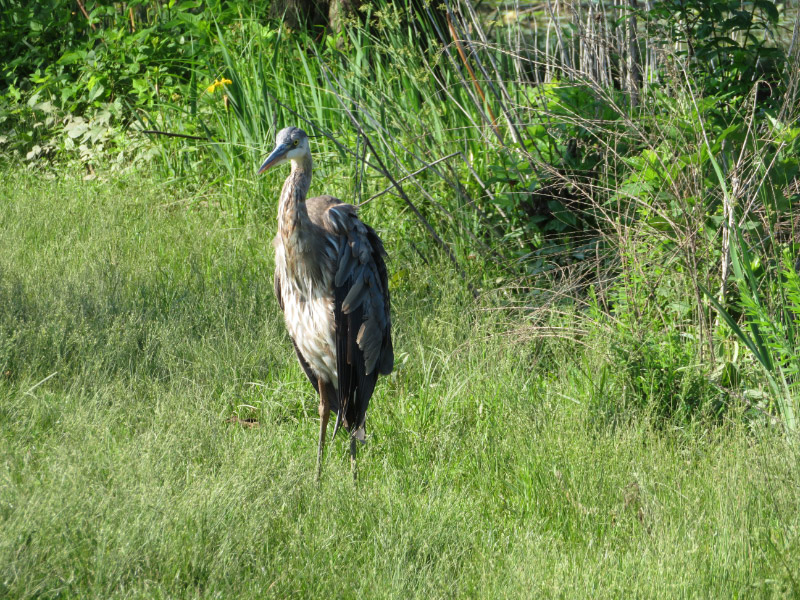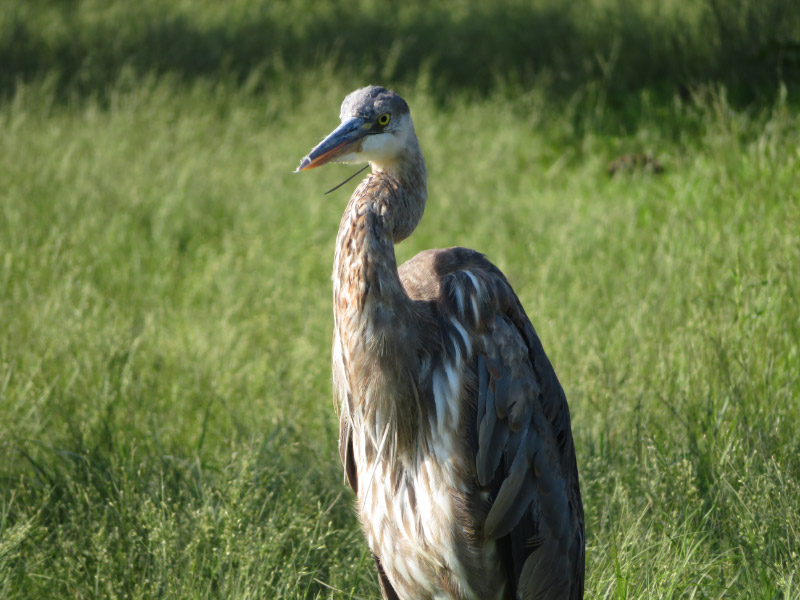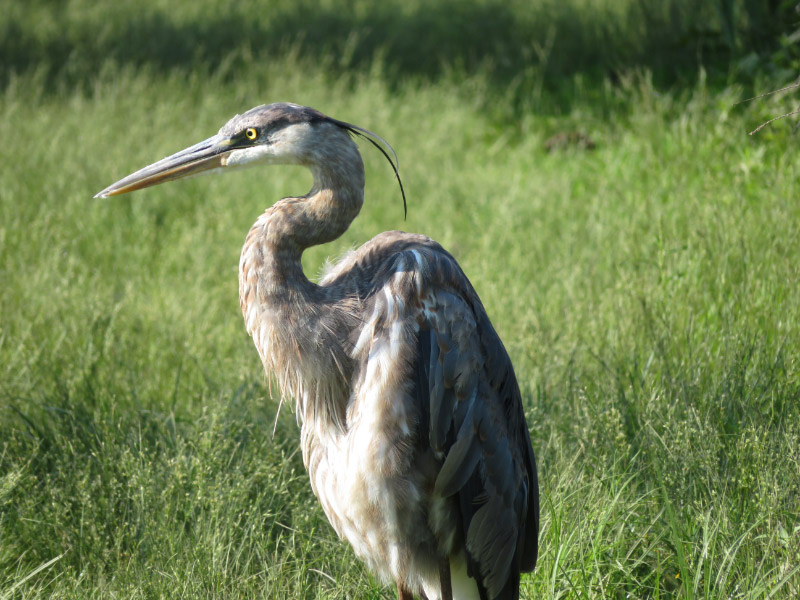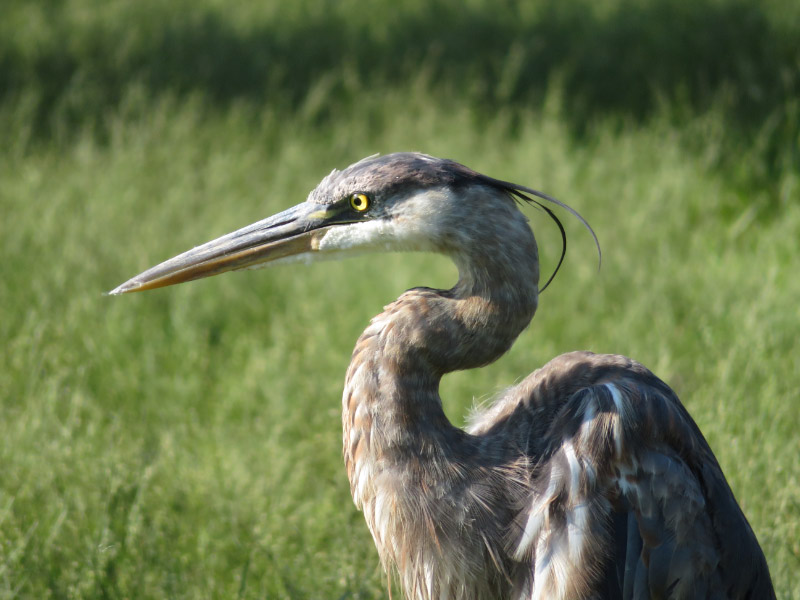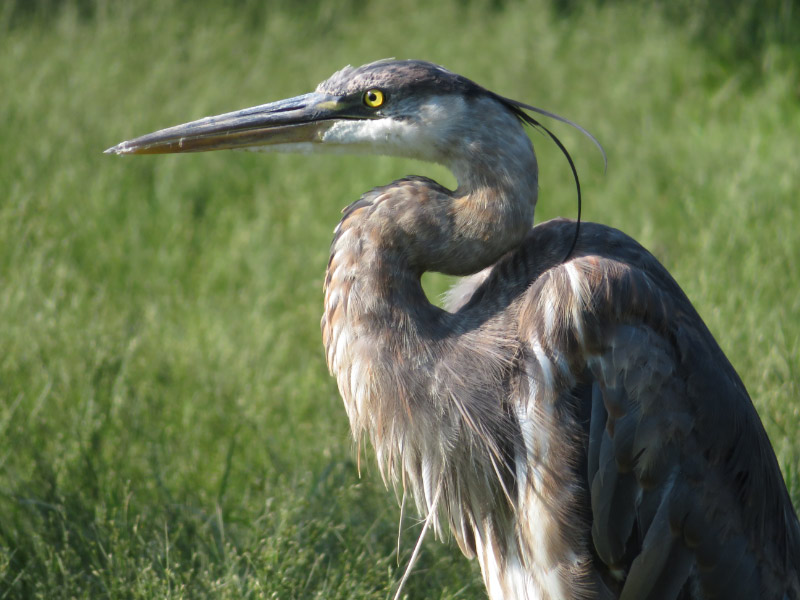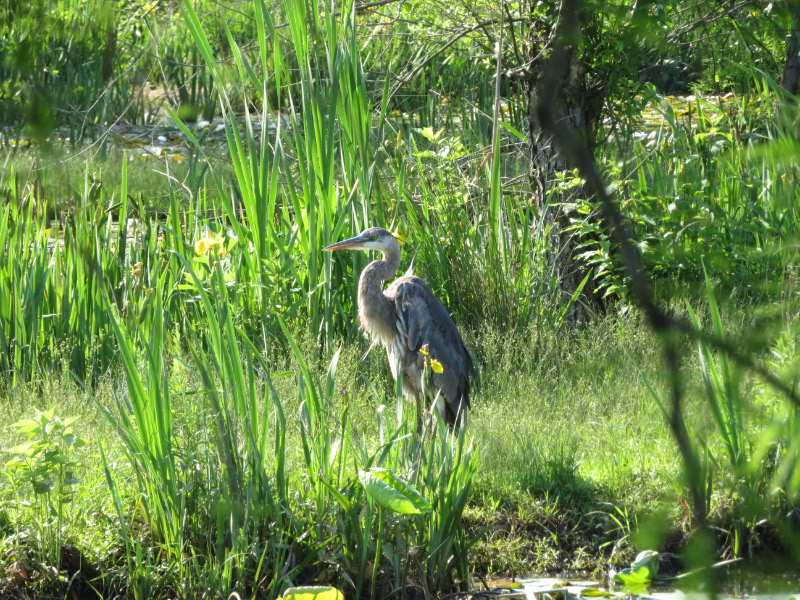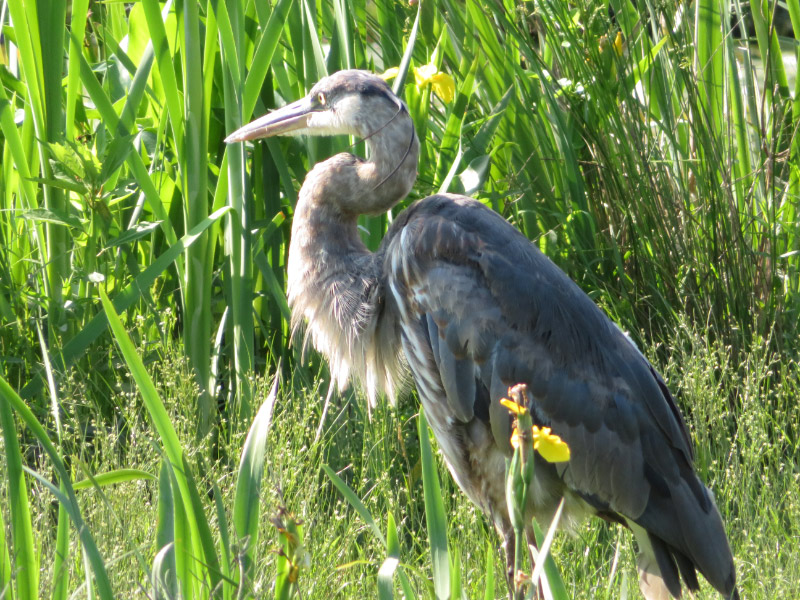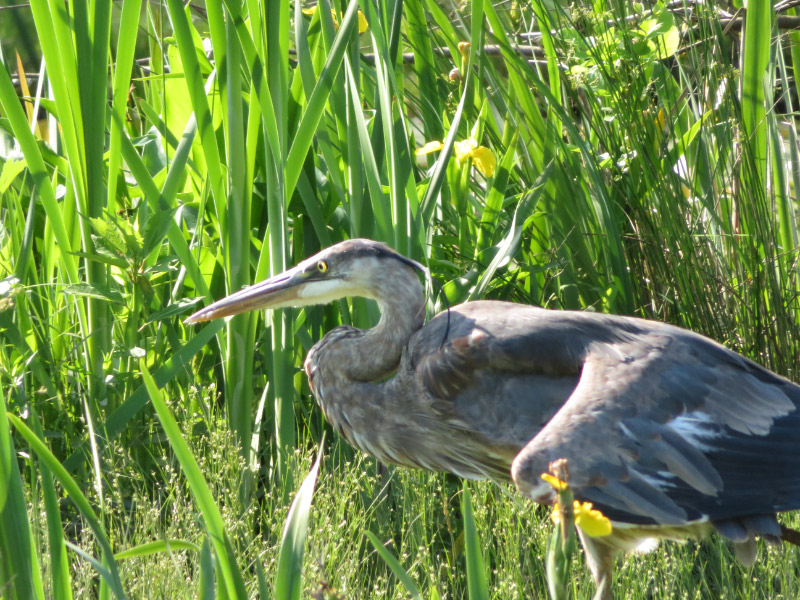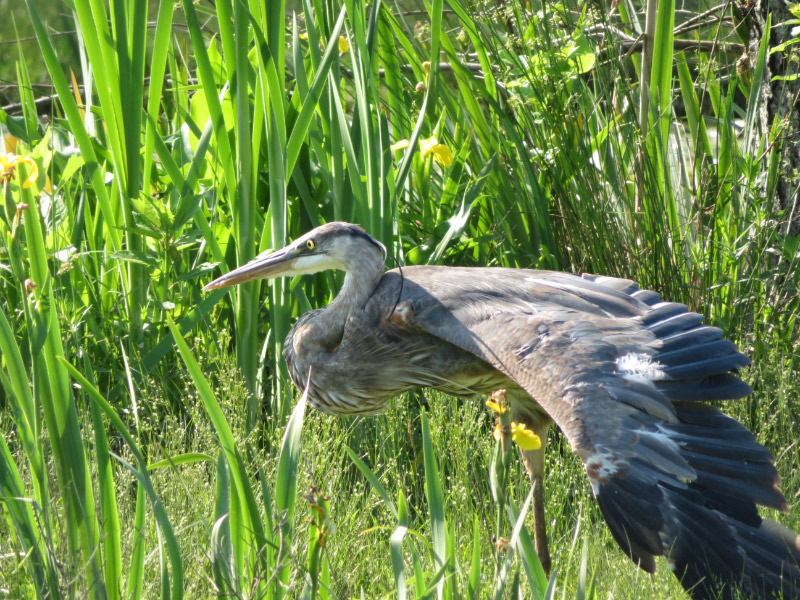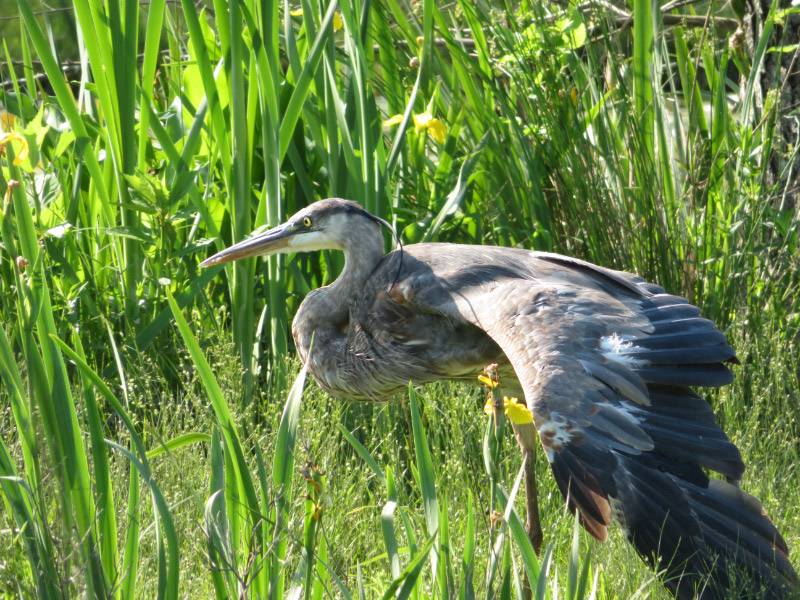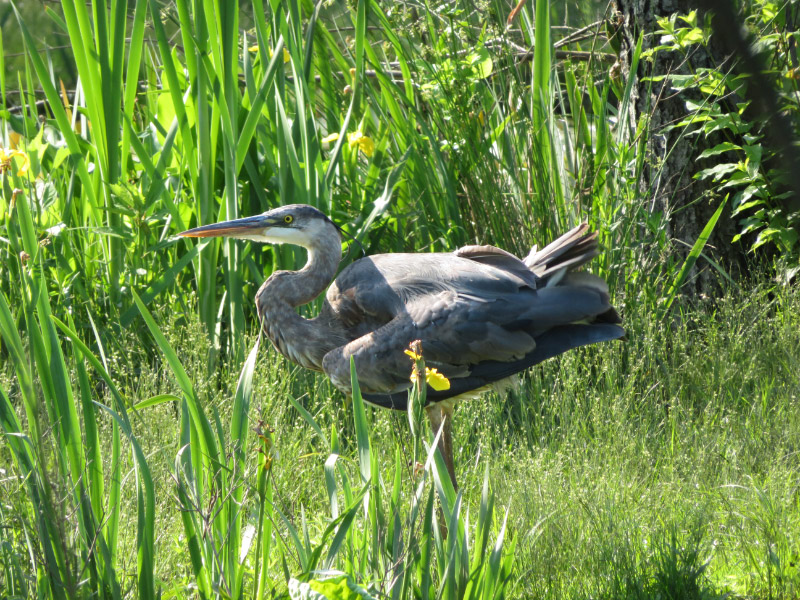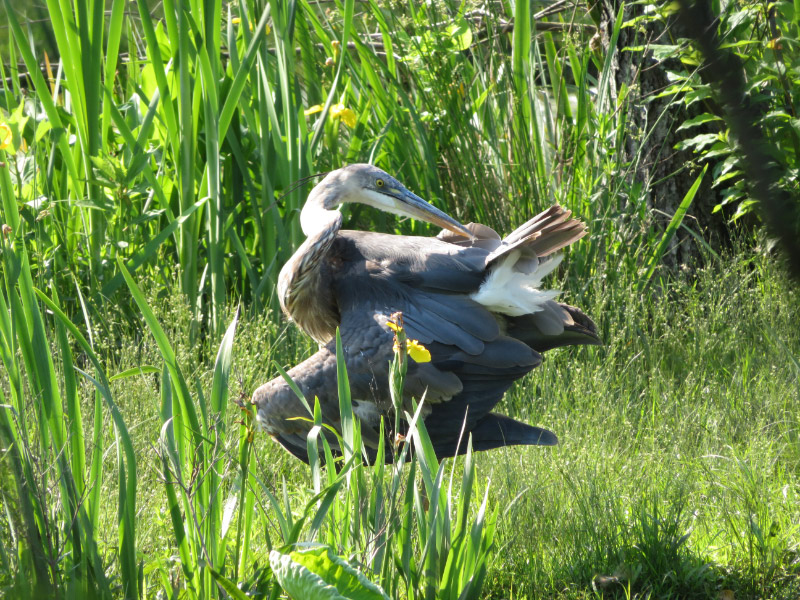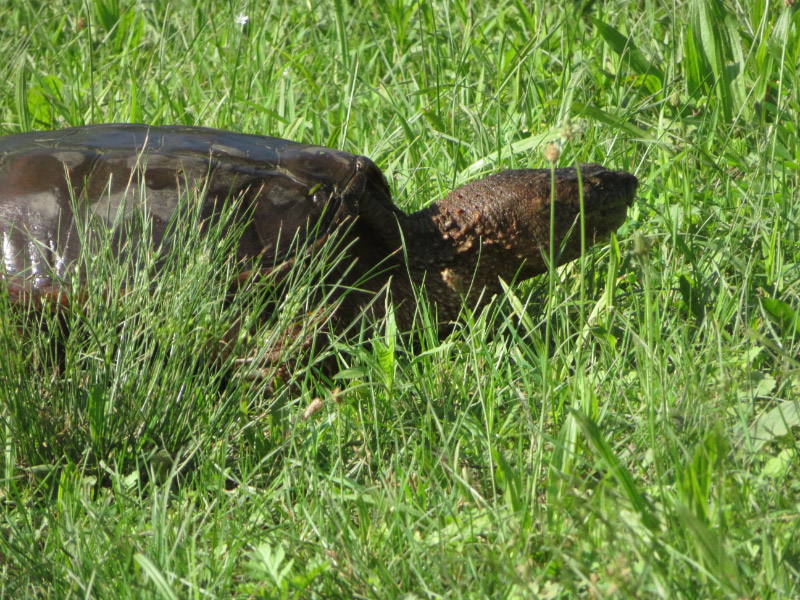Loess Bluffs National Wildlife Refuge (2)
/While the snow geese dominated the Loess Bluffs National Wildlife Refuge in terms of numbers, there were other things to see. There were many muskrat mounds, and we saw the animals swimming closer to the wildlife loop road than the snow geese. I only saw one group out of the water on a mound that looked like it was deteriorating. I couldn’t tell whether they were trying to rebuild it or just stopping there for a snack!
We heard many red-winged blackbirds. Some males might have been beginning to claim a territory, but others were still in flocks that would rise up and fly around in a murmuration. My favorite picture shows how long the claw are. It doesn’t look like the bird is gripping the twig as much as it might on a windy day.
A red-winged blackbird nest (probably from last season) was in the reeds.
There were at least two hooded merganser pairs that we saw on our morning visit. The males seemed more likely to startle and fly off…coming back to the female after a few seconds!
I took a picture of one of the bald eagle nests on our afternoon at the refuge….and then in the morning. There appears to be an eagle head visible (not in focus) in the morning picture (click on the image below to get a larger version).
More tomorrow about the other birds we saw….and the plants! There was a lot of see at Loess Bluffs National Wildlife Refuge.


















